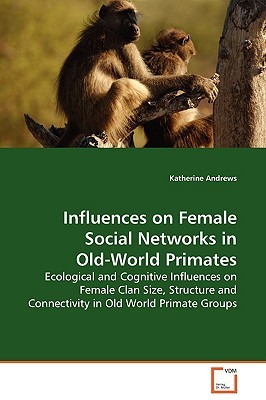
- We will send in 10–14 business days.
- Author: Katherine Andrews
- Publisher: VDM Verlag
- Year: 2009
- Pages: 104
- ISBN-10: 3639130928
- ISBN-13: 9783639130928
- Format: 15.2 x 22.9 x 0.6 cm, softcover
- Language: English
- SAVE -10% with code: EXTRA
Influences on Female Social Networks in Old-World Primates (e-book) (used book) | bookbook.eu
Reviews
Description
Primates are for the most part intensely social, and dedicate large proportions of their time budgets to servicing social relationships through grooming. Conflicting arguments have been proposed to explain the limits shown in group size; is it a restriction in the brain capacity of females to keep track of all their relationships, or could it be an ecologicaly imposed limit in the time available to socially interact and build relationships? Using methods taken from social network analysis, this study attempts to uncouple these two explanations by examining how each affects aspects of group structure and network coherence. A cross species examination suggests that group size is determined by a combination of ecological factors and cognitive ability. Most network measures were influenced only by group size or the size of grooming clans implying that the causal pathways determining group size do not originate with the ability of individual females to groom each other, but that female grooming decisions are a consequence of the size of the clans formed and therefore ultimately a consequence of group size.
EXTRA 10 % discount with code: EXTRA
The promotion ends in 17d.06:28:24
The discount code is valid when purchasing from 10 €. Discounts do not stack.
- Author: Katherine Andrews
- Publisher: VDM Verlag
- Year: 2009
- Pages: 104
- ISBN-10: 3639130928
- ISBN-13: 9783639130928
- Format: 15.2 x 22.9 x 0.6 cm, softcover
- Language: English English
Primates are for the most part intensely social, and dedicate large proportions of their time budgets to servicing social relationships through grooming. Conflicting arguments have been proposed to explain the limits shown in group size; is it a restriction in the brain capacity of females to keep track of all their relationships, or could it be an ecologicaly imposed limit in the time available to socially interact and build relationships? Using methods taken from social network analysis, this study attempts to uncouple these two explanations by examining how each affects aspects of group structure and network coherence. A cross species examination suggests that group size is determined by a combination of ecological factors and cognitive ability. Most network measures were influenced only by group size or the size of grooming clans implying that the causal pathways determining group size do not originate with the ability of individual females to groom each other, but that female grooming decisions are a consequence of the size of the clans formed and therefore ultimately a consequence of group size.


Reviews